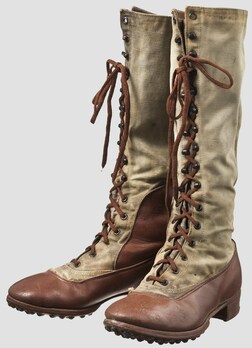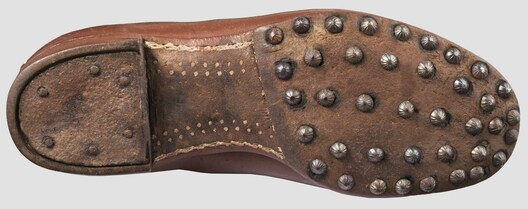Afrikakorps Heer Boots
CATEGORY: Version
SKU: 23.GOR.02.04.01.001.000
Estimated market value:


Estimated market value:
During the Second World War, German troops stationed in northern Africa are generally referred to as the Afrikakorps. Technically, this is not entirely correct, since some German units operating in Africa were not actually part of the DAK (Deutsches Afrikakorps), and some units of it were, in fact, Italian ones. However, for the purpose of collecting so-called “tropical” uniforms and insignia, collectors have simplified the meaning of the term.
The first German troops were sent to northern Africa in February of 1941, to support their Italian allies against the British. The climate of the African continent made it necessary to wear specialised uniforms and gear that not only supported the soldiers in serving in a hot and arid environment, but also helped them in blending in with the landscape, which, in general, presented itself as brown, olive, khaki, or sand/tan in colour. Worn over long periods of time under the blistering desert sun, some uniforms were eventually bleached to white or off-white. Uniforms and insignia in these colours are often referred to as “tropical”, and it is worth noting that they weren’t just worn by members of units stationed in Africa, but in the entire Mediterranean theatre of war, including southern France, Italy, the Balkans, and Greece, as well as in southern Russia during the summer months. Tropical uniforms were worn by members of all three branches of the Wehrmacht: the Heer (army), the Kriegsmarine (navy), and the Luftwaffe (air force). Members of the Waffen-SS stationed in southerly regions also wore tropical-style uniforms, and even though they technically have no connection to the DAK, all tropical uniforms and insignia of all branches of the German military are listed here.
The high boots worn in tropical climate were made of canvas and leather. They were of the lace-up type. Army boots used a combination of eyelets and hooks.
The 1st pattern has a wide canvas area between the leather toecap and the bottom lace eyelets. The 2nd pattern, which was introduced in late 1941, has the leather uppers increased in size over the instep. This was done to make the boots more durable. A 3rd pattern was introduced in mid 1942, which featured a full leather toecap.
The high boots proved to be unpopular, to the point that some soldiers cut off the top part to convert them into ankle boots.

Comments
Sign in to comment and reply.


Scroll Top